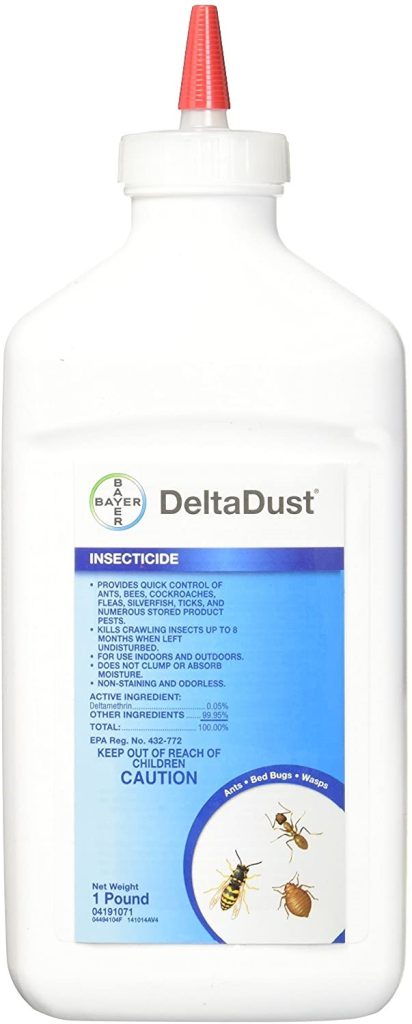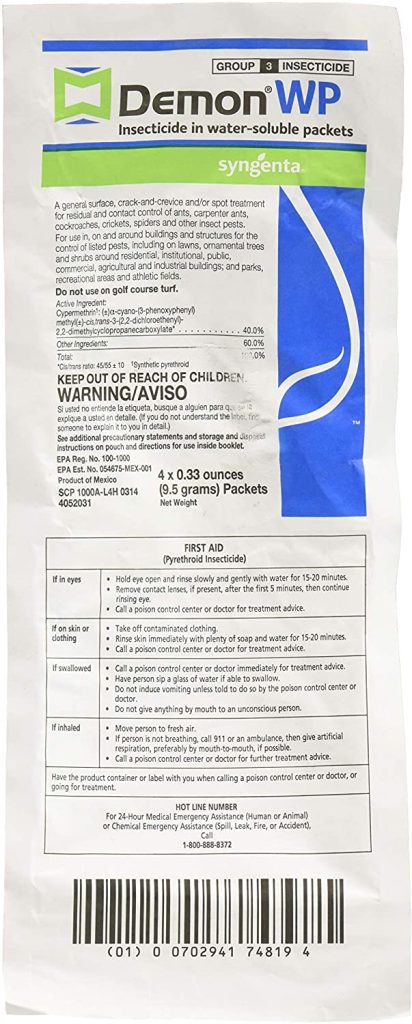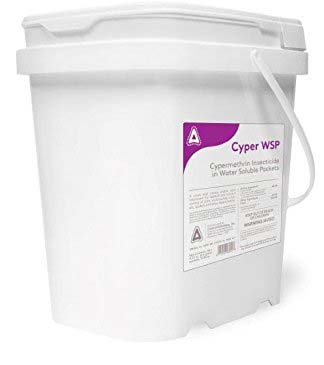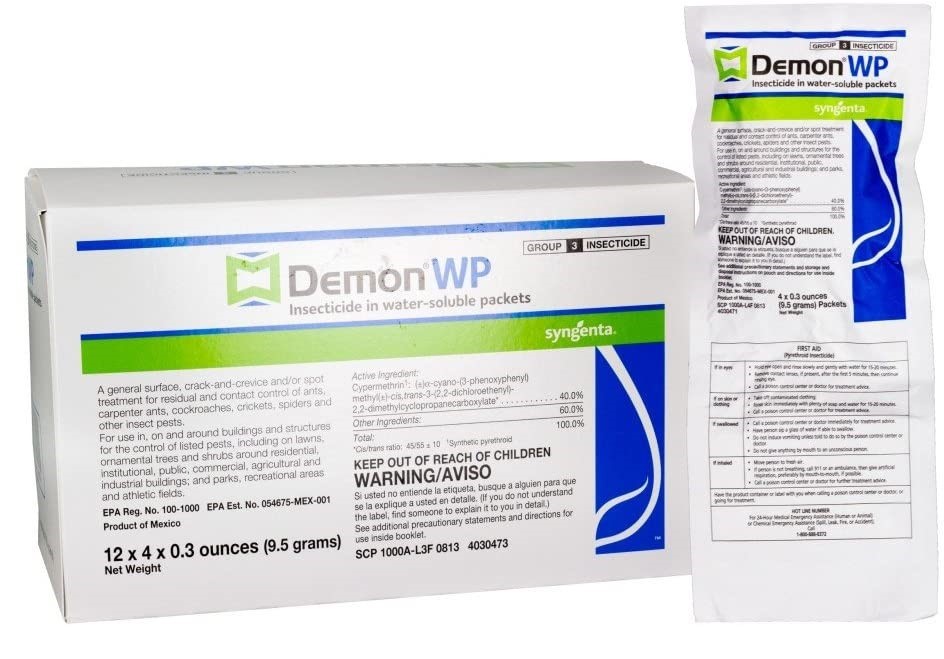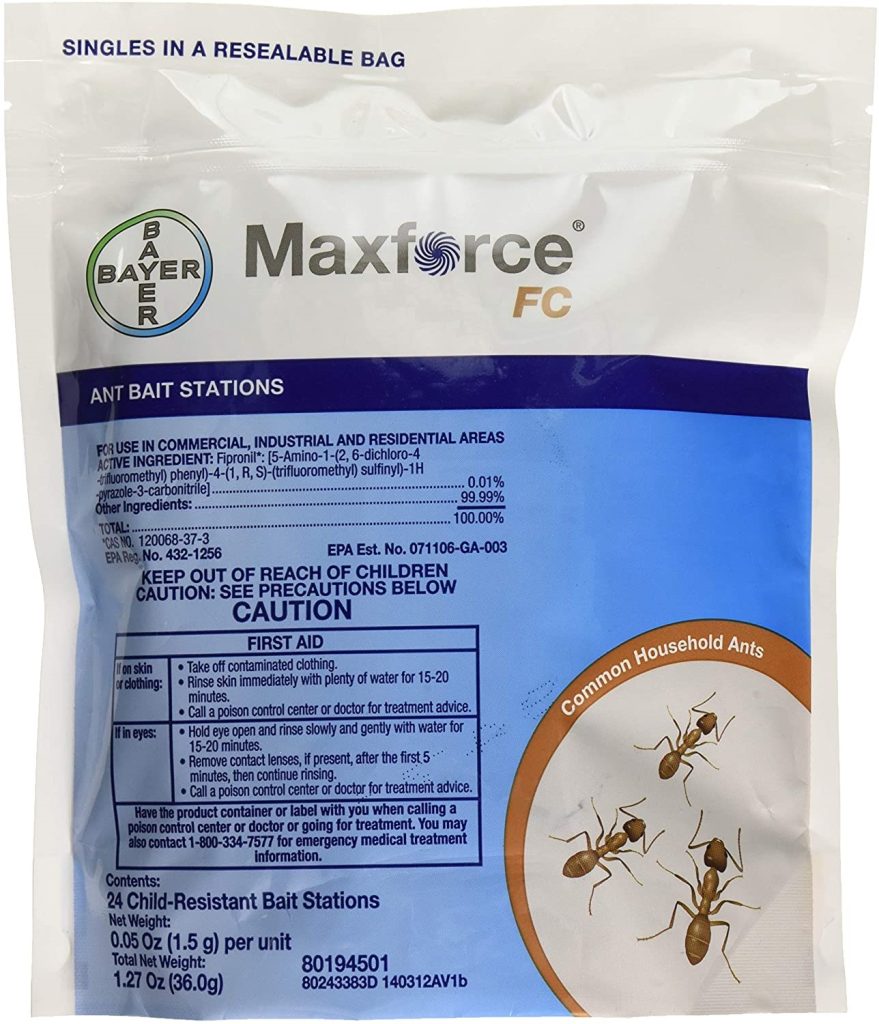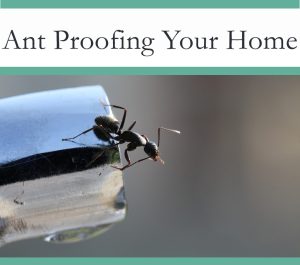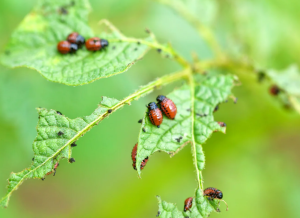How to Get Rid of Crazy Ants
Crazy ants – What they look like, How you get them & How to get rid of them.
Nylanderia fulva
Facts, Identification & Control
Crazy ants get their name from their erratic behavior. They are typically reddish brown in color and about 0.125 inches in length. Crazy ants are an invasive species that is particularly hard to control. They are pest in urban and rural areas of South America where it has displaced other ant species.
There are reports of crazy ants attacking poultry animals like small chickens, who have died of asphyxiation. Larger animals like cattle have been attacked around their hooves, nostrils and eyes. Grasslands have also dried out due to the increase in plant-sucking insect pests, which the ants cultivate to forage on sugary excretions or honeydew.
Its quick, unpredictable movements are the main reason why it’s called the “crazy ant”. It is sometimes called the Raspberry ant in Texas, named after an exterminator named Tom Raspberry, after he noticed that the number of this species was increasing in 2002.
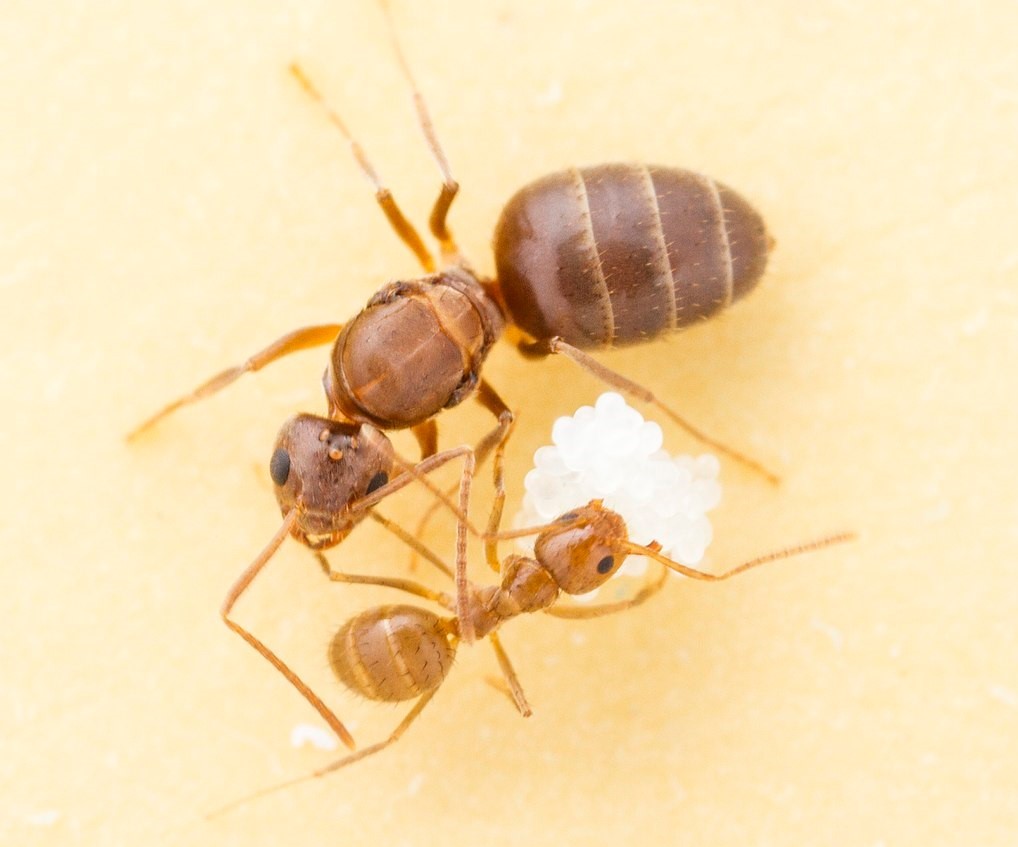
Crazy ant with eggs 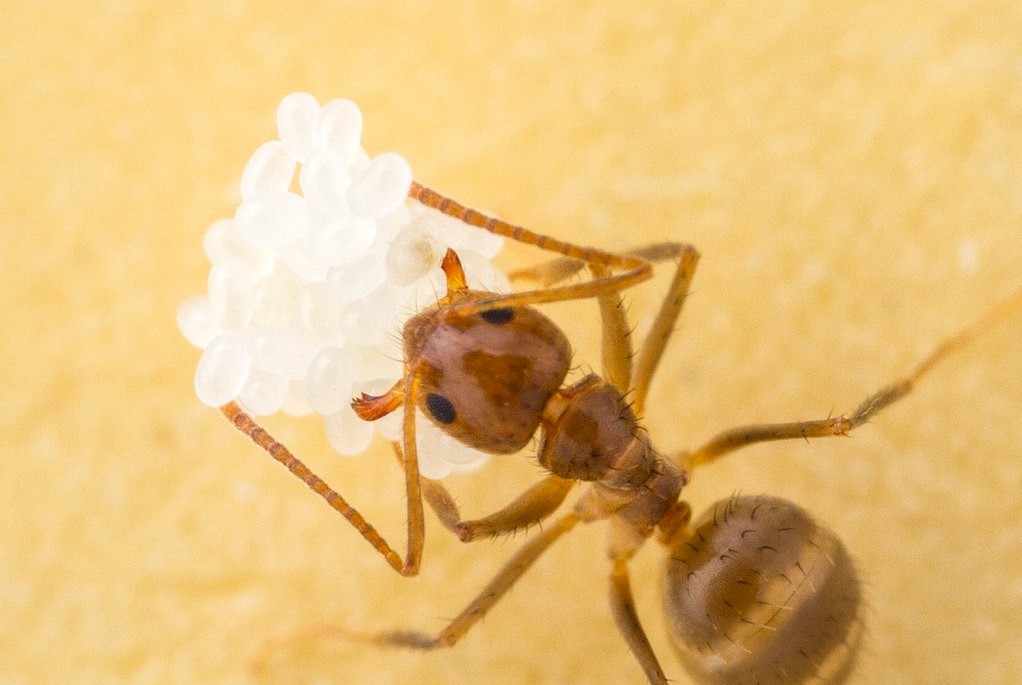
Nylanderia fulva

Identification & Characteristics
- Other Names: Tawny Crazy Ants, Raspberry Crazy Ants
- Odor: Pungent, penetrating smell like vinegar
- Color: Reddish-brown
- Size: 0.125 inches long average size
- Legs: Six
- Antennae: Yes, with 12 segments
- Shape: Streaked mandibles, shallow head, single segmented waist

Habitat
Like Carpenter ants, Crazy ants typically build their nests in rotting wood, and under different types of debris and landscape objects, such as:
- Under mulch
- Under tree bark
- Potted plants
- In vehicles
- Other covered structures
Crazy ants have been found to avoid areas like coastlines, open and warm environments like beaches, that according to studies may be due to their need for cover and large amounts of food.
They colonize away from each other and there are no boundaries between nests. One super colony can spread up to 200km. This type of set-up provides advantages in terms of colony growth, density, survival and productivity.
Their annual rate of spread in the United States by ground migration is about 240 and 360 meters per year in neighborhoods and industrial areas. It’s about 207 meters per year in rural areas. Some spread methods are by means of people, animals and vehicles (like garbage trucks).
These ant species are predominant in the Virgin Islands, Gulf Coast and southern parts of Texas.

Behavior
Crazy ants are polygamous. This species is less active during cool months, but their reproduction speeds up in the spring throughout summer and fall.
Once crazy ants establish a colony in a new area, they can become extremely dominant. Competition with other ant species can occur because of the consumption of shared resources or through direct clashes and predation of colonies of other ant species.
They are attracted to different sucking hemipterous insects like aphids, mealybugs, scale insects, treehoppers, whiteflies among others, for honeydew. They are also attracted to plant nectar, overripe fruits and other sweet food sources.
In 2014, it’s been discovered that the crazy ants produce and covers themselves with formic acid as a form of antidote to a fire ant’s venom. This is the first known discovery of an example of an insect being able to neutralize another insect’s venom.

Reproduction
Queens of crazy ants lay single white oval-shaped eggs. These eggs attach to the egg mass with saliva by worker ants. The egg stage is about 16 days and is followed by the hatching of larvae which pass through three instars for workers and four instars for male ants, this lasts for 11 days.
Next after pupation, workers bring the pupae to dryer parts of the nest where they are piled into mounds.
After 12 days, adult emergence occurs in the form of adult ant workers, male ants or queens. New discoveries have confirmed that male crazy ants actively fly throughout the year with a peak in numbers during summer months.
Females are produced once a year during late summer, but flight activity of females has not been reported. It is highly possible that queens attract flying males by excreting pheromones to facilitate colony reproduction through budding.

Danger?
Crazy ants invade people’s homes. They nest in crawl spaces and walls, and they damage electrical equipment along the way. These damages result in millions of dollars of losses, according to a report from Blackwell in 2014.
These ants chew through insulation and wiring, causing short circuits. Accumulation of dead ants causes overheating, corrosion, and other mechanical failures. When ants die around the electrical circuits, they release an alarm pheromone which cause other ants to rush over and search for attackers. When large numbers of ants gather like this, it may short out electrical systems.
They also pose a threat to agricultural production, disrupting natural biological control and result in revenue losses from crop damage.

Signs of an Crazy Ant Infestation
A common sign of crazy ants is seeing huge numbers of worker ants, all being the same size and shape foraging in a quick, haphazard manner with little pattern to their movements.

Controlling Crazy Ants
The control methods used against other invasive ants have not been effective against crazy ants and any large-scale management or suppression of their population has not been documented yet in the United States. Controlling crazy ants involves combinations of chemical and mechanical strategies.
Indoor Control
Baiting crazy ants indoors should be avoided as it may attract foragers into structures. Indoor colonies must be treated with a residual dust pesticide. Dust underneath and inside wall cracks, crevices and other small gaps or spaces with dust pesticide like Delta Dust Insecticide.
Outdoor Control
Baiting for crazy ants has limited results, so it is always better to control crazy ants is to treat entry points, trails and the ant colony itself directly with a spray or dust insecticide. Note, that you need to use either a bait or contact insecticide for indoor management, but not both. Sprays and dust contaminate each other and make them ineffective.
If you opt to use baits, multiple uses of 2 to 3 baits will give the ants options for when they suddenly change food preference. You can use a liquid-like Terro Liquid Ant Bait or a combined bait and station like Maxforce Ant Baits.
Each place or area where crazy ants are present or suspected to be present, should be treated with insecticides like Cyper WSP to kill any existing ants while preventing new colonies from emerging. Spray a good barrier around the home, at least 2 feet high on the side of the building and about 3 to 6 feet out on the ground to provide good protection zone.

Best Products to Get Rid of Crazy Ants
Inside the House:
Every area in the house where crazy ants activity is sighted must be dusted directly or sprayed on directly, with insecticide.
Recommended Bait Types:
Best Products for Outside the House:
For baiting crazy ants outdoors, make sure to combine a variety of different baits and place them in all locations where there are traces of the ants or suspected areas where they enter the house to forage for food.
When spraying, make sure to drench nests or colonies with enough insecticide to kill the remaining ants.
Consider Seeking Professional Help
Controlling and managing infestation as ubiquitous as crazy ants is quite labor extensive, in addition to their evasiveness, is the rapid growth once they have established a new nest. If you have tried treating them with the available measures and resources available to you, without success, consider having a pest control professional come in and eradicate them.
Dial (866) 250-4176 for a free exterminator quote!

Preventing Infestations
When you’re done with your treatment of appropriate pesticide chemicals, other non-chemical methods can help sustain control and prevent re-infestation of crazy ants:
- Repair leaky pipes and faucets. Ensure that all pipes are working well as moisture attracts the ants.
- Trim tree branches, shrubs and other vegetation that can serve as ant highways to enter the house or the structure.
- Move away piles of building materials. Materials such as stacked wood, stones, bricks, leaf litter, heavy mulch and other debris can serve as harborage, remember that these ants seek cover. You have to move these things as far away from the structure or the perimeter of the house as possible.
- Practice good sanitation. Move furniture from time to time, and make sure not to leave food on counters or out in the open so that you won’t attract foragers in the house.
- Fill gaps and cracks in the structure. Make sure to fill the gaps, crevices and cracks in the walls, the floor, the foundation, baseboards, window frames and sidings to remove any entry point for the ants.

